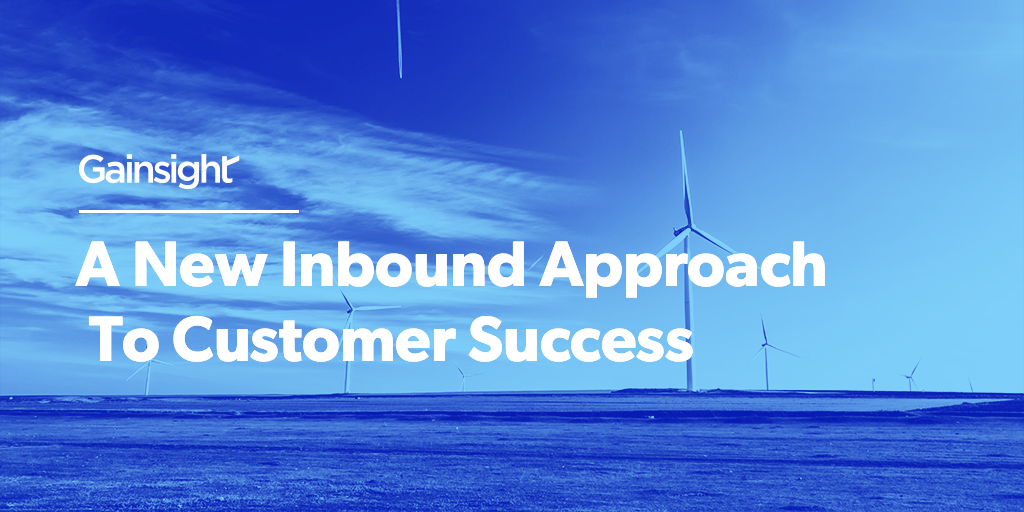If you’re familiar with HubSpot, then the word that probably comes to mind is “inbound.”
Inbound marketing was the concept upon which we founded HubSpot: that outbound, interruption-based marketing was going extinct, and instead of interrupting people to get their attention, you needed to start attracting an engaged audience to grow bigger and better.
From Funnel To Flywheel
In 2018, based on a new set of observations, we decided to update one of the core concepts of inbound marketing. The funnel, our beloved model for growth, just didn’t make as much sense as it used to. We retired the funnel and introduced the flywheel model because we needed something that treated customers not as an output of sales and marketing but placed customers at the very center of a modern-day business. A modern model, for a modern buyer, and a modern business.
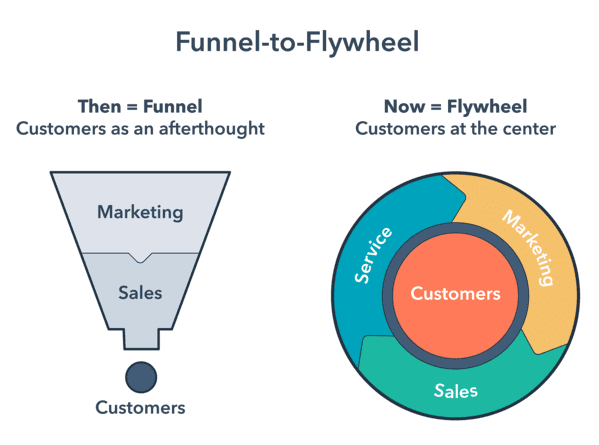
As HubSpot’s former VP of Services and Support, and now General Manager of the Service Hub product, I wanted to provide our customers with a seamless, clear path to success that delivered exceptional value across the whole customer experience—regardless of which tool or team they interacted with at any given moment. Building this experience is how we decided to grow better at HubSpot, and match the modern buyer’s behaviors with our business.
The Importance Of Customer Success
I’ve learned at HubSpot that customers are your biggest growth lever. When you put the customer at the center of your business, you align your company goals with their success, and in turn, they help you grow better. It’s a formula for sustainable, long term growth.
HubSpot’s flywheel has three steps to help businesses grow better with their customers: attract, engage, and delight. Customer success is focused on the delight stage, and it’s our job in customer success to drive the customer experience forward and help customers succeed. We want our customers to grow with us, and in turn, have them become our biggest promoters and advocates to attract new customers.

While this may sound fluffy at first glance, customer success is in fact tied directly to your bottom line. It helps you reduce churn rates, improve renewal and satisfaction, and therefore, boost revenue. Especially as you grow larger and larger, these factors become more and more important. Plus, it’s the right thing to do: good businesses look after their customers, and so do good humans.
Today, we’re going to adapt the inbound methodology to encompass tenets of customer success.
Engage with customers to close the trust gap
While most companies like to say they are “customer-first”, our research found that only 12% of consumers actually believe a business that says it “puts the customer first.” It’s a shame when companies say they put the customer first yet don’t. But it’s commonplace. And, today, our knee-jerk reaction as consumers is to disbelieve companies when they claim to be customer-centric.

How did we find ourselves in this modern-day crisis of trust between customers and companies? The reality is that most companies optimize for scale, smooth operations, and as much margin as possible. They solve for themselves nearly exclusively, and don’t think of their customers when making key operational decisions that will eventually make or break the customer experience.
In turn, most customers of most companies are not delighted. Far from it. They dread calling a company for support. They fear they’ll be ignored or have their time wasted. Inside the company, those internal projects that cut costs for the company are seen as successful, but the customer is the one suffering at the end of the day.
This resulting trust crisis, this dynamic between consumers and companies, is a huge opportunity for the clueful, modern business. Companies that aim to delight their customers should invest in support and produce remarkable customer experiences. Companies that accomplish this have a special opportunity to win on customer delight and disrupt the competition.
Guide customers with proactive solutions that scale their success
Once you have a foundation in place to engage and delight customers when they need you most, you can start investing in proactive strategies that proactively improve the experience.
For example, if you see trends in the types of questions your customers ask, you can collect and codify those answers in a knowledge base. If you know that your customers are constantly looking for best practices on a specific tactic, at a specific moment in the lifecycle, you can turn that knowledge into an amazing piece of content, delivered in a timely, proactive way.
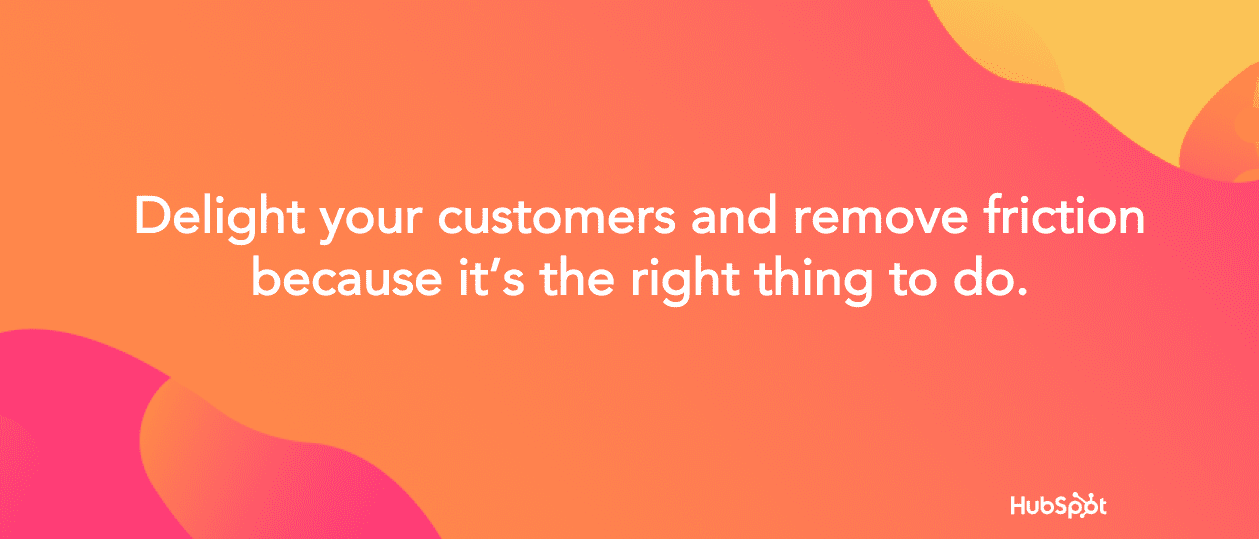
Why invest in these proactive solutions? Friction throughout the customer journey slows down your flywheel and ultimately your business growth. If you can understand your customer journey, identify key moments of friction, and proactively guide them to better outcomes, you can grow bigger and better.
Customer success aims to do the following: to deeply understand each customer’s journey, intervene at the right time through human and automated outreach, and ultimately remove friction from each customer’s path to success. We can start to think of customer success as a way to proactively reduce friction in the flywheel and help customers achieve their goals faster. That means more customer delight and more customer growth.
Here’s a bonus: this practice is good for your company’s operations, too. With your customers encountering fewer issues on their own, they need less reactive help to be successful. Now, you can invest more in self-service and proactive customer success, unlocking higher-level work for your team and new heights for your customers’ success. That really spins your flywheel faster and faster.
Grow relationships with customers to develop loyal promoters
Delighting customers is easier said than done, whether proactive or reactive. In fact, research shows a major trend: customers have higher expectations than ever and are more likely than ever to share their experiences… good and bad. In a world where every customer comes equipped with a digital megaphone, it might be hard, but customer delight is more important than ever.
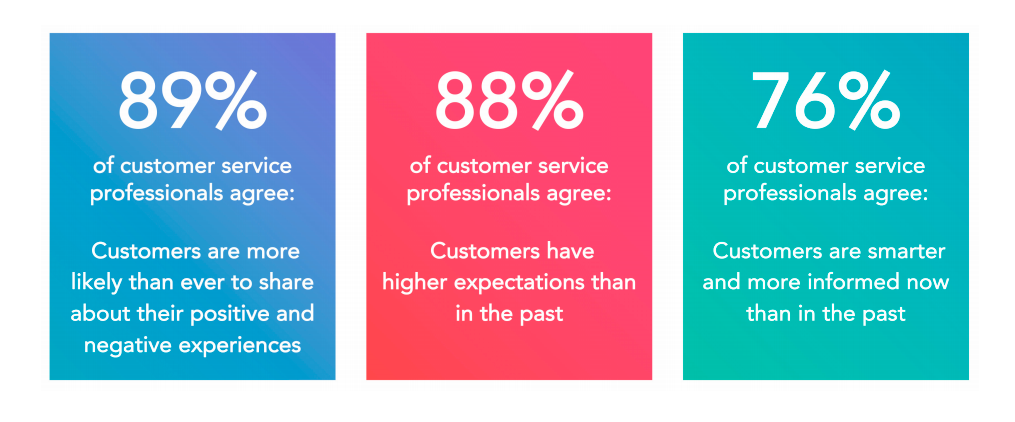
Here’s how we think about it at HubSpot. Once you’ve established delight-inducing support, started to pull friction out of the customer experience, and invested in proactive customer success, you’re doing pretty well. In fact, you’re probably delighting customers that your competition can’t, and your attention to and investment in the customer experience is starting to pay off! You’re building differentiation through the customer experience.
You’re now sitting on the modern business’s most valuable asset: happy customers. This represents a very special opportunity to build word-of-mouth, and turn your best customers into your best marketers, to grow even faster.
How do you do it? First, identify your happy and unhappy customers by collecting feedback about their experience with your product or service. Next, action all customer feedback by taking a personalized approach to follow up, especially with any negative feedback. Then lastly, for your fans, start an advocacy program that highlights the voices of your company’s greatest advocates, and invites them to amplify your growth.
This all works because humans trust humans, not companies. The advocacy of your customers is a trust-based, scalable way to grow, and creates a much more profound impact than your marketing message. We, as humans and buyers, intrinsically trust other humans, not companies. It starts with delighted customers, and uses their advocacy to fuel your flywheel and grow better.
Your Flywheel Story Begins Today
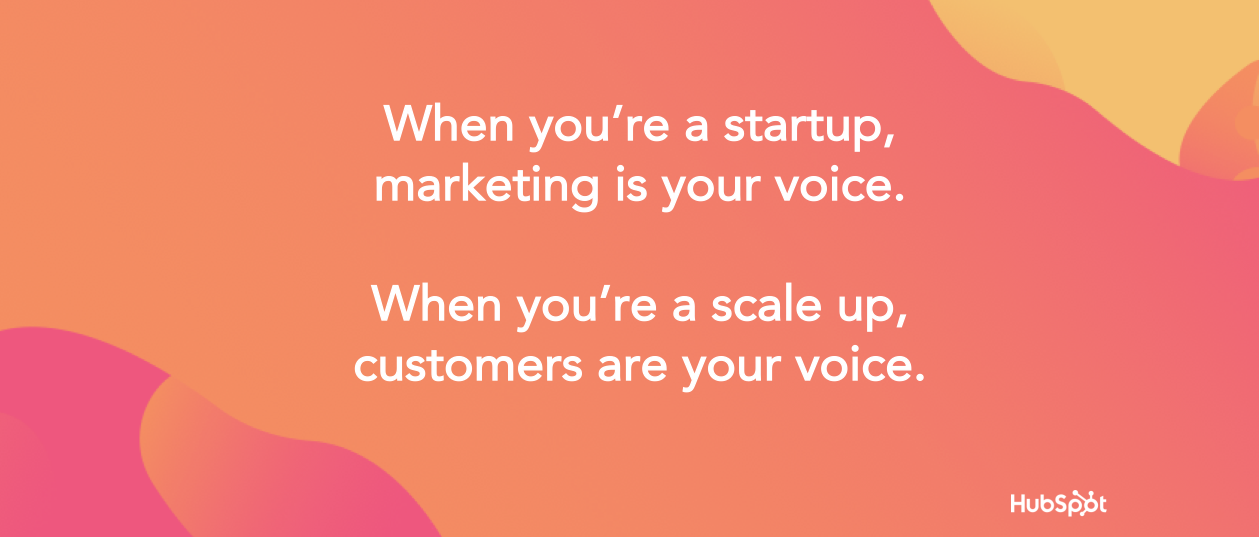
When you’re a startup, marketing is your voice. When you’re a scale up, customers are your voice.
When you have more and more customers, they will define your brand, success, and growth. This means it’s no longer enough to just have good marketing. You need to have your customers fight and advocate for your business if you want to grow. Customers will do this if you delight them throughout their journey, invest in their experience, and put their success first.
We’ve learned that and lived it through our growth at HubSpot. That’s why we’ve retired the trusty marketing funnel, which treats customers as an output, and adopted the flywheel, which treats customers as the center of your business.
